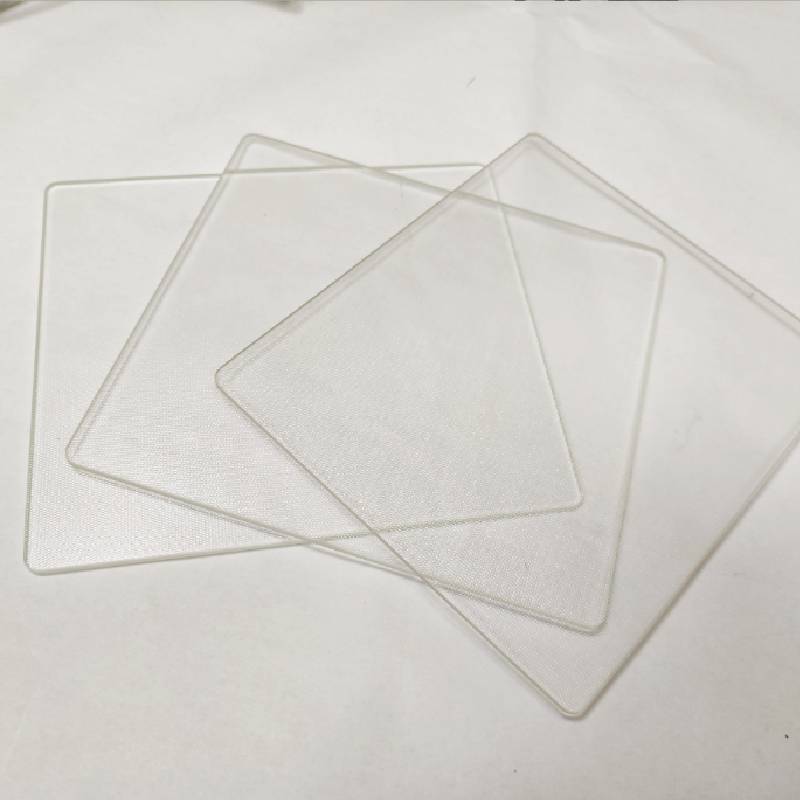The Advancements and Applications of Infrared Reflecting Glass
Infrared reflecting glass is an innovative material that has gained traction in various fields due to its unique properties. This specialized type of glass is designed to reflect infrared radiation while allowing visible light to pass through. The significance of this technology has led to its increasing use in architectural designs, automotive applications, and even in electronic devices. This article explores the advancements and applications of infrared reflecting glass, highlighting its benefits and future potential.
Understanding Infrared Reflecting Glass
Infrared reflecting glass is produced by applying thin films of metal oxides or other materials onto a glass substrate. These coatings are tailored to reflect infrared wavelengths (typically from 700 nm to 1200 nm) while maintaining high transmittance for visible light (approximately 400 nm to 700 nm). The result is a versatile glass that can reduce solar heat gain while allowing natural light to illuminate spaces. The technology is primarily rooted in optics and materials science, where the properties of various coatings are manipulated to achieve desired reflection and transmission characteristics.
Benefits of Infrared Reflecting Glass
One of the most significant advantages of infrared reflecting glass is its ability to improve energy efficiency. In buildings, it acts as a thermal barrier, reducing the need for air conditioning. This is particularly beneficial in regions with hot climates where excessive heat can lead to increased energy consumption. By minimizing solar heat gain, infrared reflecting glass helps maintain comfortable indoor temperatures, leading to reduced utility bills and a lower carbon footprint.
In automotive applications, the use of infrared reflecting glass enhances passenger comfort by reducing the heat buildup inside vehicles
. This innovative glass can help in maintaining optimal temperatures without over-relying on air conditioning systems, thus improving fuel efficiency. Additionally, it can protect interior upholstery from fading due to prolonged exposure to sunlight.
Another remarkable advantage is the improvement of visibility and safety. By allowing visible light to penetrate while reflecting harmful infrared rays, this glass reduces glare and enhances clarity. This is of particular importance in both architectural and automotive contexts, where visibility is paramount.
infrared reflecting glass
Applications of Infrared Reflecting Glass
The applications of infrared reflecting glass are vast and varied. In architecture, it has been widely adopted in the design of energy-efficient buildings. Many modern skyscrapers and commercial constructions utilize this glass to meet building codes and sustainability standards. As more governments implement regulations aimed at reducing energy consumption, the adoption of infrared reflecting glass is likely to increase.
In the automotive industry, major manufacturers are integrating infrared reflecting glass into their vehicle designs to enhance energy efficiency and improve passenger comfort. Luxury vehicles often feature this technology as a standard, given the focus on providing a quality driving experience while addressing environmental concerns.
Additionally, the technology has found its way into consumer electronics, where it is utilized in screens and displays. By incorporating infrared reflecting properties, manufacturers can reduce glare and heat accumulation, resulting in better performance and longevity of devices such as smartphones and tablets.
Future Potential
The future of infrared reflecting glass holds promising potential. As demand for energy-efficient solutions continues to rise, research into enhancing the performance of this glass will likely advance, focusing on durability, cost-effectiveness, and multifunctionality. Innovations in nanotechnology and smart materials may pave the way for adaptive infrared reflecting glass that can change its properties in response to environmental conditions.
In conclusion, infrared reflecting glass represents a significant advancement in material technology, providing a myriad of benefits across various industries. Its ability to enhance energy efficiency, improve comfort, and increase safety positions it as a crucial component in the ongoing quest for sustainability. As technology continues to evolve, the importance and applications of infrared reflecting glass are expected to expand, paving the way for a more energy-conscious future.
 Afrikaans
Afrikaans  Albanian
Albanian  Amharic
Amharic  Arabic
Arabic  Armenian
Armenian  Azerbaijani
Azerbaijani  Basque
Basque  Belarusian
Belarusian  Bengali
Bengali  Bosnian
Bosnian  Bulgarian
Bulgarian  Catalan
Catalan  Cebuano
Cebuano  Corsican
Corsican  Croatian
Croatian  Czech
Czech  Danish
Danish  Dutch
Dutch  English
English  Esperanto
Esperanto  Estonian
Estonian  Finnish
Finnish  French
French  Frisian
Frisian  Galician
Galician  Georgian
Georgian  German
German  Greek
Greek  Gujarati
Gujarati  Haitian Creole
Haitian Creole  hausa
hausa  hawaiian
hawaiian  Hebrew
Hebrew  Hindi
Hindi  Miao
Miao  Hungarian
Hungarian  Icelandic
Icelandic  igbo
igbo  Indonesian
Indonesian  irish
irish  Italian
Italian  Japanese
Japanese  Javanese
Javanese  Kannada
Kannada  kazakh
kazakh  Khmer
Khmer  Rwandese
Rwandese  Korean
Korean  Kurdish
Kurdish  Kyrgyz
Kyrgyz  Lao
Lao  Latin
Latin  Latvian
Latvian  Lithuanian
Lithuanian  Luxembourgish
Luxembourgish  Macedonian
Macedonian  Malgashi
Malgashi  Malay
Malay  Malayalam
Malayalam  Maltese
Maltese  Maori
Maori  Marathi
Marathi  Mongolian
Mongolian  Myanmar
Myanmar  Nepali
Nepali  Norwegian
Norwegian  Norwegian
Norwegian  Occitan
Occitan  Pashto
Pashto  Persian
Persian  Polish
Polish  Portuguese
Portuguese  Punjabi
Punjabi  Romanian
Romanian  Russian
Russian  Samoan
Samoan  Scottish Gaelic
Scottish Gaelic  Serbian
Serbian  Sesotho
Sesotho  Shona
Shona  Sindhi
Sindhi  Sinhala
Sinhala  Slovak
Slovak  Slovenian
Slovenian  Somali
Somali  Spanish
Spanish  Sundanese
Sundanese  Swahili
Swahili  Swedish
Swedish  Tagalog
Tagalog  Tajik
Tajik  Tamil
Tamil  Tatar
Tatar  Telugu
Telugu  Thai
Thai  Turkish
Turkish  Turkmen
Turkmen  Ukrainian
Ukrainian  Urdu
Urdu  Uighur
Uighur  Uzbek
Uzbek  Vietnamese
Vietnamese  Welsh
Welsh  Bantu
Bantu  Yiddish
Yiddish  Yoruba
Yoruba  Zulu
Zulu 

